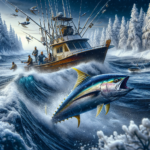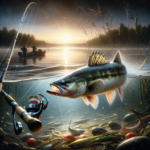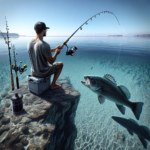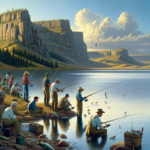Fall Bass Fishing in Virginia’s Rivers
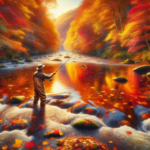
Introduction
Did you know that Virginia’s rivers are home to some of the best fall bass fishing in the United States? As the leaves change color and the temperatures drop, bass fishing enthusiasts flock to the state’s waterways to take advantage of the prime fishing conditions. This article will delve into the intricacies of fall bass fishing in Virginia’s rivers, covering everything from the best techniques and gear to the top fishing spots and seasonal considerations.
Whether you’re a seasoned angler or a novice looking to improve your skills, understanding the nuances of fall bass fishing in Virginia can significantly enhance your experience. This guide aims to provide you with all the information you need to make the most of your fishing trips during this vibrant season.
Background/Context
Historical or Cultural Significance
Virginia has a rich history of fishing that dates back to the Native American tribes who first inhabited the region. These early inhabitants relied on the abundant fish populations in Virginia’s rivers for sustenance. Over the centuries, fishing has evolved from a means of survival to a popular recreational activity, deeply embedded in the state’s culture.
Geographical Overview
Virginia is blessed with a diverse range of rivers, each offering unique fishing opportunities. The James River, Rappahannock River, and Shenandoah River are among the most popular for bass fishing. These rivers flow through various landscapes, from mountainous regions to coastal plains, providing a variety of habitats for bass and other fish species. The climate in Virginia is generally mild, with distinct seasonal changes that influence fish behavior and fishing conditions.
Key Points/Details
Fishing Techniques
Technique Overview
Fall bass fishing in Virginia often involves techniques such as jigging, crankbait fishing, and topwater fishing. Each technique has its own set of advantages and is suited to different conditions and locations.
When and Where to Use
Jigging is particularly effective in deeper waters where bass tend to congregate as temperatures drop. Crankbait fishing works well in areas with rocky bottoms or submerged structures, while topwater fishing is ideal for early mornings or late evenings when bass are more likely to be near the surface.
Recommended Gear
- Rods: Medium-heavy rods are versatile and suitable for most fall bass fishing techniques.
- Reels: Baitcasting reels offer better control and accuracy, especially for techniques like jigging and crankbait fishing.
- Lines: Braided lines are durable and provide excellent sensitivity, making them ideal for detecting subtle bites.
- Bait/Lures: Jigs, crankbaits, and topwater lures are essential for fall bass fishing. Consider using natural colors that mimic local baitfish.
Species Information
Species Overview
The primary target for fall bass fishing in Virginia is the largemouth bass, known for its aggressive behavior and strong fight. Smallmouth bass are also prevalent in certain rivers, particularly those with rocky substrates and clear water.
Best Practices
To successfully catch largemouth bass, focus on areas with ample cover such as fallen trees, submerged vegetation, and rock formations. Smallmouth bass, on the other hand, are often found in faster-moving waters with rocky bottoms. Using the right bait and techniques, such as jigging near structures or crankbait fishing along rocky shorelines, can significantly increase your chances of success.
Location Information
Top Fishing Spots
- James River: Known for its diverse fish population and scenic beauty, the James River offers excellent bass fishing opportunities, particularly around Richmond and Williamsburg.
- Rappahannock River: This river is famous for its smallmouth bass fishing, especially in the upper stretches near Fredericksburg.
- Shenandoah River: A hotspot for both largemouth and smallmouth bass, the Shenandoah River is ideal for anglers looking for a mix of fishing experiences.
Regulations and Licenses
Before heading out, make sure to familiarize yourself with Virginia’s fishing regulations. A valid fishing license is required for all anglers aged 16 and older. Additionally, there are specific catch limits and seasonal restrictions that vary by location and species. Visit the Virginia Department of Wildlife Resources website for the most up-to-date information.
Seasonal Considerations
Seasonal Variations
Fall is a transitional season, and fishing conditions can change rapidly. As water temperatures drop, bass become more active and start feeding aggressively in preparation for winter. This makes fall an excellent time for bass fishing, but it’s essential to adjust your techniques and gear to match the changing conditions.
Best Times to Fish
The optimal times for fall bass fishing are early morning and late afternoon when water temperatures are cooler, and bass are more likely to be feeding. Overcast days can also be productive, as bass tend to be more active under these conditions.
Events and Tournaments
Event Overview
Virginia hosts several bass fishing tournaments in the fall, attracting anglers from across the country. Events like the James River Bass Tournament and the Shenandoah River Fall Classic offer competitive opportunities and a chance to connect with fellow fishing enthusiasts.
Preparation Tips
To prepare for a tournament, make sure your gear is in top condition and practice your techniques in advance. Study the specific rules and regulations of the event, and consider scouting the fishing location beforehand to identify potential hotspots.
Tips and Best Practices
General Tips
- Pay attention to water temperature and adjust your techniques accordingly.
- Use natural-colored lures that mimic local baitfish.
- Focus on areas with ample cover, such as fallen trees and submerged vegetation.
Avoid Common Mistakes
- Avoid using overly heavy tackle, as it can reduce sensitivity and make it harder to detect bites.
- Don’t overlook shallow areas, especially during early morning and late afternoon.
- Be patient and give each spot enough time before moving on.
Advanced Techniques
- Try using a drop shot rig for deeper waters where bass are likely to be holding.
- Experiment with different retrieval speeds and patterns to find what works best.
- Use a fish finder to locate underwater structures and schools of baitfish.
Gear and Equipment Recommendations
Essential Gear
- Medium-heavy rod and baitcasting reel
- Braided fishing line
- Jigs, crankbaits, and topwater lures
- Tackle box with a variety of hooks, weights, and swivels
Optional Gear/Upgrades
- Fish finder for locating underwater structures
- Polarized sunglasses to reduce glare and see beneath the water surface
- Fishing gloves for better grip and protection
Where to Buy or Rent
Local tackle shops in Virginia, such as Green Top Sporting Goods and Bass Pro Shops, offer a wide range of fishing gear. Online retailers like Amazon and Cabela’s also provide extensive selections and convenient delivery options.
Safety and Conservation
Safety Tips
- Always wear a life jacket when fishing from a boat.
- Check the weather forecast before heading out and be prepared for sudden changes.
- Inform someone of your fishing plans and expected return time.
Conservation Practices
- Practice catch and release to help maintain healthy fish populations.
- Respect local wildlife and avoid disturbing natural habitats.
- Follow all fishing regulations and report any violations to authorities.
Planning Your Trip
Accommodations
Virginia offers a variety of accommodations near popular fishing spots, ranging from campgrounds and cabins to hotels and bed-and-breakfasts. Consider staying at locations like James River State Park or Shenandoah National Park for easy access to prime fishing areas.
Travel Tips
Virginia is easily accessible by car, with major highways connecting different regions of the state. If you’re flying in, Richmond International Airport and Washington Dulles International Airport are convenient options. Renting a car is recommended for reaching remote fishing spots.
Additional Activities
In addition to fishing, Virginia offers a wealth of outdoor activities such as hiking, kayaking, and wildlife watching. Historical sites like Colonial Williamsburg and Monticello provide fascinating insights into the state’s rich heritage.
Frequently Asked Questions (FAQs)
What is the best time of year for bass fishing in Virginia?
Fall is one of the best times for bass fishing in Virginia, as bass are more active and feeding aggressively in preparation for winter.
Do I need a fishing license to fish in Virginia’s rivers?
Yes, a valid fishing license is required for all anglers aged 16 and older. Licenses can be purchased online or at local retailers.
What are the top rivers for bass fishing in Virginia?
The James River, Rappahannock River, and Shenandoah River are among the top rivers for bass fishing in Virginia.
What gear do I need for fall bass fishing?
Essential gear includes a medium-heavy rod, baitcasting reel, braided fishing line, and a variety of lures such as jigs, crankbaits, and topwater lures.
Conclusion
Fall bass fishing in Virginia’s rivers offers an exciting and rewarding experience for anglers of all skill levels. By understanding the best techniques, gear, and locations, you can maximize your chances of success and enjoy the beauty of Virginia’s waterways. Whether you’re participating in a tournament or simply enjoying a day on the river, the tips and information provided in this guide will help you make the most of your fall bass fishing adventures.
So grab your gear, head to one of Virginia’s picturesque rivers, and experience the thrill of fall bass fishing for yourself!

